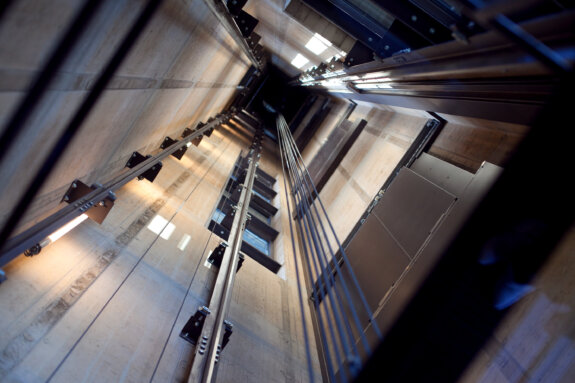Although uncommon, elevator accidents can occur unexpectedly and have devastating consequences. These incidents often result from mechanical failures or human errors, such as poor maintenance or operational oversights. When elevators malfunction, they can cause injuries ranging from minor bruises to severe, life-altering conditions. Understanding the causes and effects of these accidents is crucial for ensuring safety in buildings that rely on these complex systems for daily vertical transportation.
What Causes Elevator Accidents?
Elevator accidents can occur due to a myriad of mechanical and human factors. Here’s a breakdown of the common causes:
Mechanical Failures
- Worn-Out Components: If not properly maintained, essential parts like cables, pulleys, or brakes can wear out over time, leading to malfunctions.
- Faulty Wiring: Electrical issues can cause sudden stops, erratic elevator behavior, or even fires.
- Improper Installation: Errors during the installation process can result in long-term operational problems.
Human Errors
- Maintenance Negligence: Skipping regular maintenance checks or using substandard replacement parts can lead to critical failures.
- Operational Mistakes: Misuse by operators or passengers, such as overriding safety features or overcrowding, directly impacts the elevator’s functionality.
Regulatory Non-Compliance
- Safety Standards Ignored: Failing to meet safety codes and standards can increase the risk of accidents, highlighting the need for strict adherence to regulations.
These factors underscore the complexity and necessity of thorough oversight in elevator operation and care.
Injuries Commonly Sustained in Elevator Accidents
Elevator accidents can lead to various injuries, ranging from minor to critically severe. Soft tissue injuries such as sprains, strains, or bruises are common and often result from sudden stops or minor falls within the elevator. More serious impacts can cause bone fractures, typically in the arms, legs, or ribs, due to collisions with the elevator walls or floor. Head traumas, including concussions or more severe brain injuries, can occur if an individual’s head strikes a hard surface during an abrupt movement. Additionally, spinal cord injuries might happen from falling or being jerked around, potentially leading to temporary or permanent mobility issues.
Beyond physical injuries, psychological trauma is also prevalent, with individuals possibly developing anxiety, elevator phobias, or post-traumatic stress disorder following an incident. These varied injuries highlight the critical need for stringent safety measures and immediate attention to elevator malfunctions.
What to Do If You’re Involved in an Elevator Accident
If you’re involved in an elevator accident, your immediate priority should be to seek medical attention, even if injuries seem minor, as some symptoms may appear later. Report the incident to the building management to ensure they are aware and can take necessary action. Documenting the event is crucial; take notes and photos of the scene if possible, and gather contact information from any witnesses. This documentation can be important for any future legal action or insurance claims. Keeping a clear record from the start strengthens your case should you seek compensation later.
Contact Our Experienced Walnut Creek Elevator Accident Attorneys
At Casper, Meadows, Schwartz & Cook, we are dedicated to supporting victims of elevator accidents through comprehensive legal representation. Our team thoroughly investigates each case, gathering evidence and building a strong claim on your behalf. We negotiate with insurance companies and responsible parties to ensure you receive the compensation you deserve for medical expenses, lost wages, and emotional distress.
With decades of experience and a track record of successful outcomes, we are prepared to advocate for your rights vigorously. Contact us today for a free consultation, and let us help you secure the justice you deserve.

